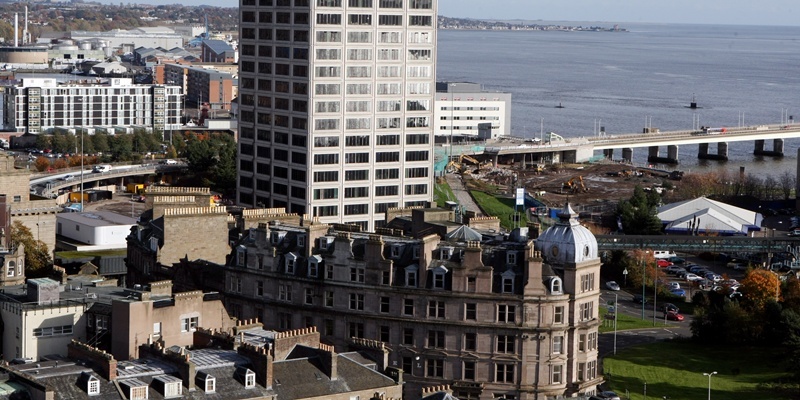Plans by boutique hotel chain Malmaison to give the Tay Hotel a new lease of life show Dundee’s potential to become a major tourist destination, it has been argued.
The Courier revealed on Monday that the popular hotel chain is behind proposals for an ambitious redevelopment of the Tay Hotel. Although still a landmark building in the city centre, the hotel has been derelict since 1997 when it was closed down after a small fire.
However, Malmaison is now working with developers with a view to transforming the building into a 91-room boutique hotel.
Dundee City Council development convener Will Dawson said the proposal, along with Unicorn Property’s plan to turn Customs House into a similarly upmarket hotel, would help transform perceptions of Dundee at home and abroad.
He said, “It shows a lot of confidence in the city having such a prestigious hotel coming here and a lot of belief in what we’ve got planned for the waterfront.”
Mr Dawson said Malmaison’s plans to open a hotel in Dundee show the city is shedding the negative image it has often been tarred with in the past.
“That’s the whole thinking behind a lot of what we have been working towards with things like the One City, Many Discoveries campaign. The negative impression Dundee has had wasn’t deserved at all. To have two major opportunities in Dundee like Malmaison and Customs House shows a lot of positive support for Dundee and a lot of confidence in the future.
“I think the V&A has helped a lot with the decisions that these companies have made.”LeadingHe added that the developments like Malmaison and plans for the V&A at Dundee will help turn the city into a leading tourist destination.
“It’s not before time. Dundee already has a lot to offer people, including world-class attractions like Discovery Point and The McManus,” Mr Dawson said.
Dundee would be home to Malmaison’s 13th hotel if the company proceeds with its plans. Malmaison operates hotels in Aberdeen, Edinburgh, Glasgow, Belfast, Leeds, Liverpool, London, Manchester, Newcastle, Oxford and Reading.
Formed in 1994, the group is owned by MWB Group Holdings. The company also owns the Hotel du Vin chain, which includes the prestigious Glasgow hotel One Devonshire Gardens. MWB bought the Malmaison chain for £77 million in 2000 when it had just five hotels. MWB then paid £66.4 million for six Hotel du Vin hotels four years later.
The company’s pre-tax losses rose from £7.8 million to £11.6 million in the last six months of 2010 while its debts rose to £302 million, primarily because of the expansion of its hotels portfolio. According to the company’s interim report published last month, the company aims to reduce Malmaison’s debt in order to pay for further expansion of the brand.
It also reveals that although the Tay Hotel may become part of the Malmaison group, it is unlikely the firm will buy the building outright.
“As part of this debt reduction, we aim to reduce debt within Malmaison and Hotel du Vin (Malmaison), so as to further improve the level of gearing and to facilitate the planned expansion of our hotel brands both within the UK and, in appropriate circumstances, abroad,” it states.
“This proposed expansion will follow the more traditional hotel business model in that we will take either operating leases or negotiate operating and management agreements, rather than purchasing property which we would own directly. By adopting this approach we will avoid exposure to the considerable risks inherent in property investment, development and management.”
